Dimethomorph
- CAS NO.:110488-70-5
- Empirical Formula: C21H22ClNO4
- Molecular Weight: 387.86
- MDL number: MFCD01632781
- EINECS: 404-200-2
- SAFETY DATA SHEET (SDS)
- Update Date: 2025-01-27 09:38:02
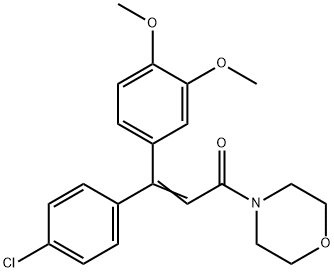
What is Dimethomorph?
Description
Dimethomorph is a morpholine fungicide that inhibits fungal cell wall formation. It inhibits mycelial growth of the oomycete fungi P. citrophthora, P. parasitica, P. capsici, and P. infestans (EC50s = 0.14, 0.38, <0.1, and 0.16-0.3 μg/ml, respectively) but is less active against the green algae species C. vulgaris or S. obliquus in vitro (EC50s = 47.46 and 44.87 μg/ml, respectively). It inhibits androgen receptor (AR) activity in a reporter assay in MDA-kb2 human breast cancer cells but not in a yeast antiandrogen screen (IC20s = 0.263 and 38.5 μM, respectively). It is not toxic to rats (LD50 = 3,900 mg/kg) or goldfish (C. auratus; LC50 = >32 μg/ml).
Chemical properties
Off-White Solid
The Uses of Dimethomorph
Dimethomorph is a systemic fungicide which exhibits protectant, curative and antisporulant activities. It is active against fungal diseases such as leaf blight, downy mildew, damping off and foot-rot caused by Phytophthora spp. in/on grapes, potatoes and tomatoes.
The Uses of Dimethomorph
Agricultural fungicide.
Definition
ChEBI: A mixture of (E)- and (Z)-dimethomorph in an unspecified ratio. It is used as a systemic fungicide used on vines, potatoes, and greenhouse crops; only the Z isomer has fungicidal activity.
Agricultural Uses
Fungicide: A systemic fungicide that protects crops from mold. It also kills mold and prevents their spread; controls late blight on tomatoes; and is used as a wood preservative to control downey mildew.
Trade name
ACROBAT® WP; FORUM DC®, [manco- zeb + dimethomorph]; CME 151®; STATURE®
Metabolic pathway
Limited data are available in the open literature. Information presented in this summary is abstracted from the data evaluation published by the Pesticide Safety Directorate (PSD, 1994). Dimethomorph is a (1:l) mixture of the E- and Z-isomers. The Z-isomer has been shown to have all the intrinsic biological activities. The isomerisation of the E- and Z-isomers was observed when resolved isomers were exposed to UV light. Dimethomorph undergoes extensive degradation and metabolism in soil, plants and animals. The major metabolic pathway is the O-demethylation of one of the phenolic methoxy moieties to the corresponding phenols and conjugates. Other metabolic reactions include the oxidation of one of the CH2 moieties of the morpholine ring and the cleavage/opening of the morpholine ring (Scheme 1).
Degradation
Dimethomorph (1) is hydrolytically stable with no observable degradation
in pH 4-9 buffered solutions at 70-90 °C for up to 10 weeks.
Degradation occurred when dimethomorph in pH 5 buffer solution was
irradiated under Hanau Suntest apparatus (<290 nm) at 25 °C. The calculated
aqueous photolytic degradation half-life (DT50) was ca. 25-28 days of
continuous irradiation, No sigruficant degradation product (>7% of the
applied radioactivity) was identified.
Properties of Dimethomorph
| Melting point: | 125-149°C |
| Boiling point: | 584.9±50.0 °C(Predicted) |
| Density | 1.231±0.06 g/cm3(Predicted) |
| vapor pressure | 1 x 10-6 Pa (25 °C) |
| storage temp. | Sealed in dry,Room Temperature |
| solubility | Chloroform: Soluble,Methanol: Soluble |
| form | neat |
| Water Solubility | 50 mg l-1 (20-23 °C) |
| pka | -1.19±0.20(Predicted) |
| form | Solid |
| color | White to off-white |
| Merck | 13,3248 |
| BRN | 8794474 |
| EPA Substance Registry System | Dimethomorph (110488-70-5) |
Safety information for Dimethomorph
| Signal word | Danger |
| Pictogram(s) |
 Health Hazard GHS08  Environment GHS09 |
| GHS Hazard Statements |
H411:Hazardous to the aquatic environment, long-term hazard |
| Precautionary Statement Codes |
P202:Do not handle until all safety precautions have been read and understood. P273:Avoid release to the environment. P280:Wear protective gloves/protective clothing/eye protection/face protection. P391:Collect spillage. Hazardous to the aquatic environment P308+P313:IF exposed or concerned: Get medical advice/attention. P405:Store locked up. |
Computed Descriptors for Dimethomorph
New Products
Methyl (R)-1-Boc-4,4-difluoropyrrolidine-2-carboxylate 2,2-Difluoropropylamine hydrochloride tert-butyl 3-bromoazetidine-1-carboxylate (R)-1-Boc-3-hydroxypyrrolidine DIFLUOROACETIC ANHYDRIDE 2,2-Difluoropropionic acid Diallylamine, 99% Calcium hydroxide, 95% Aluminum oxide, basic 2-Bromophenylacetonitrile, 97% L-tert-Leucine,97% N-Hydroxy-2-methylpropanimidamide 4-(3,4-Dichlorophenyl)-3,4-Dihydro-N-Methyl-1-(2H)-Naphthalenimine (Schiff Base) 2-AMINO-3,5-DIBROMO BENZALDEHYDE [ADBA] L-Glutamic Acid Dimethyl Ester Hcl 10-Methoxy-5H-dibenz[b,f]azepine 5-Cyanophthalide N, N-Carbonyldiimidazole (CDI) Dibenzoyl Peroxide Titanium Dioxide 2-(Methylthio) Benzonitrile Sodium Acetate Anhydrous Allopurinol 1,5-DibromopentaneRelated products of tetrahydrofuran
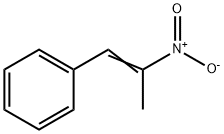
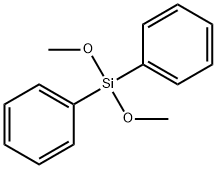
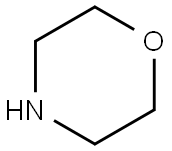


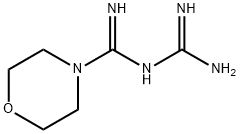


You may like
-
 110488-70-5 Dimethomorph 98%View Details
110488-70-5 Dimethomorph 98%View Details
110488-70-5 -
 Z-Dimethomorph 95% CAS 110488-70-5View Details
Z-Dimethomorph 95% CAS 110488-70-5View Details
110488-70-5 -
 Dimethomorph CAS 110488-70-5View Details
Dimethomorph CAS 110488-70-5View Details
110488-70-5 -
 Ethyl-2-Chloroacetoacetate 609-15-4View Details
Ethyl-2-Chloroacetoacetate 609-15-4View Details
609-15-4 -
 CIS- BROMO BENZOATEView Details
CIS- BROMO BENZOATEView Details
61397-56-6 -
 609-15-4View Details
609-15-4View Details
609-15-4 -
![1-(6-Methylpyridin-3-Yl)-2-[4-(Methylsulfonyl)Phenyl]Ethanone [Ketosulfone] 99%](https://img.chemicalbook.in//Content/image/CP5.jpg) 1-(6-Methylpyridin-3-Yl)-2-[4-(Methylsulfonyl)Phenyl]Ethanone [Ketosulfone] 99%View Details
1-(6-Methylpyridin-3-Yl)-2-[4-(Methylsulfonyl)Phenyl]Ethanone [Ketosulfone] 99%View Details
221615-75-4 -
 27143-07-3View Details
27143-07-3View Details
27143-07-3
